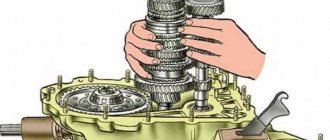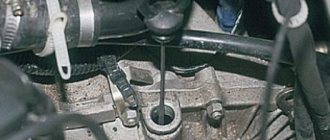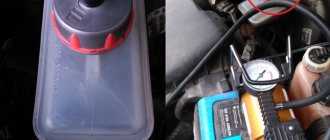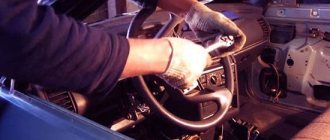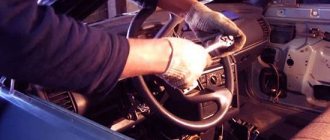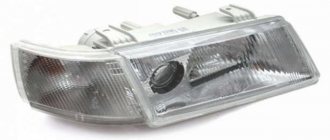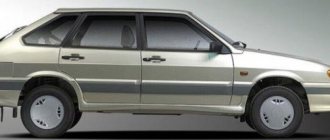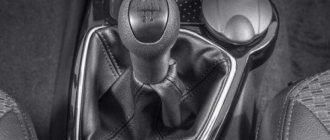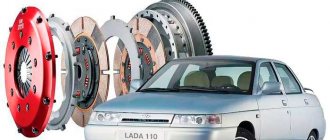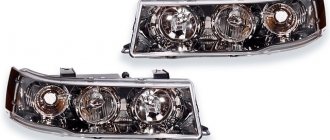What the public loves about our cars is their simplicity of design, availability of spare parts and ease of repair. As a rule, all basic work is carried out with a standard set of tools, except in rare cases when some kind of puller is desirable. But, as a rule, they can do without it.
The need for dismantling work
This holy simplicity helps to save on the services of masters, and quite a lot. Moreover, given the age category of owners of the VAZ 2110 and others like it, such repair work instills diligence, a love of technology and develops hand motor skills. But seriously, in any garage, any person who is even remotely familiar with threaded connections will be able to dismantle and restore any unit.
The need to dismantle the VAZ 2110 gearbox arises not only when there is a problem in the gearbox itself, but also when for some reason you need to get to the clutch - change the disc, repair the basket, change the release bearing. Despite the fact that the car is inexpensive, the owners have very few complaints about it, which is why they choose the VAZ 2110 among the entire model range. Removing the gearbox is no exception. The work is carried out in several stages, and takes about an hour and a half.
Preparatory work
Before we start removing the VAZ 2110 gearbox, let's prepare for work on the material part. To withdraw you will need:
- set of open-end wrenches;
- set of spanners
- heads and knobs with cardan;
- without a hammer - nowhere;
- a skein of strong braid (although you can do without it);
- jack.
In order to avoid going under the car and getting up from the inspection hole a hundred times, we will try to organize the work according to this principle.
Work on removing the gearbox from the engine compartment
- We place the car on a flat platform with an inspection hole. If it is possible to use a lift, great, it will make the work much easier. We open and fix the hood in the open position, after which the first step is to remove the terminals from the battery, starter relay and speed sensor.
- Disconnect the mass from the clutch housing and disconnect its drive cable. Now you can unscrew the two uppermost bolts securing the clutch housing to the cylinder block and the upper starter mounting nut.
- Now we need to think about keeping the engine in the same position when we disconnect it from the mounting points. For this, the factory has provided a mounting eye, which should be on the manifold stud. We hang the motor with braid either on a beam in the garage, or on a traverse, or on a board laid across the car, resting it on the drainage grooves. We get down under the car.
Work carried out under the car
- remove the engine splash guard and the protective cover of the clutch housing;
- drain the transmission oil from the gearbox, having previously unscrewed the plug;
- we find the reverse switch and disconnect the terminals from it; loosen the clamp securing the linkage, remove it from the selector;
- find and disconnect the jet thrust;
- we disconnect the internal CV joints, make sure that the unfixed side gear does not fall into the gearbox;
- use a hammer to knock out both hinges;
- move it to the sides of the drive to the maximum possible distance;
- if it is not possible to dismantle the CV joints on the car, then you will have to remove them along with the box and then knock them out in a vice, if there is such a need;
- unscrew the rear engine mount, the engine is already hanging;
- unscrew the left engine mount;
- unscrew the remaining starter mounting nut;
- dismantle the starter;
- We put a spacer under the gearbox so that you can remove the load from the mating plane, slightly loosen the braid on which the motor is attached;
- unscrew the last bolt securing the box to the crankcase, move it back and remove it together with the clutch housing.
The box has been dismantled. When carrying out work, you must take into account that in no case should you rest the gearbox on the input shaft in order to avoid its deformation, and when removing it, you must carefully remove the shaft from the clutch, there is a danger of damaging the petals of the basket.
Installation of the box is carried out in the reverse order, the only thing that can be strongly recommended is to be sure to change the retaining rings on the inner CV joints. Happy work!
In what cases should the gearbox be removed?
Before removing the gearbox, you should make sure that the malfunctions are related specifically to it and are not caused, for example, by insufficient oil level, loose gearbox mounts, or defects in the clutch release drive.
Gearbox VAZ 2110
The need to remove the gearbox occurs when the following malfunctions occur:
- transmissions switch off spontaneously;
- unclear gear shifting;
- increased noise, appearance of extraneous sounds;
- when overtaking, the clutch disappears;
- gears are difficult to shift;
- oil leaks.
In addition, the gearbox should be removed in the following cases:
- when replacing the clutch;
- when replacing an old gearbox with a new one;
- if it is necessary to eliminate the leak of the crankshaft rear oil seal;
- when replacing the front gearbox oil seal;
- when replacing the release bearing;
- when replacing the flywheel;
- when replacing the bushing;
- in cases where the box interferes with any repair work.
The weight of the box without oil is approximately 30 kg, so it is recommended to carry out the procedure for removing it with an assistant. It is advisable that he has experience in auto repair work.
Gearbox under the car
Malfunctions
Every car owner with experience begins to feel a malfunction in the car’s gearbox based on characteristic signs. Most gearbox breakdowns are associated with wear of rubbing parts, because they experience constant significant load while driving. However, such wear rarely reaches a critical state immediately. This is usually a gradual process, which is why a novice driver is always advised to learn to “listen” to the car. The sooner you notice a problem, diagnose it accurately and fix it, the less repair work will need to be done and the less it will cost.
It is recommended to regularly check where the vehicle is parked for stains to monitor leakage of technical fluids.
You can classify signs that indicate breakdowns as follows:
- Noise in manual transmission. This may be a crackling, knocking, rustling, grinding, as well as beating of the gear shift lever. Knocking can occur during different phases of the box's operation. An experienced motorist can even determine from such a rustle which parts are at risk. For example, noise when a car turns into a turn indicates wear on the differential gears.
- Spontaneous “dropping out” of the gear while driving. Over time, gear teeth become chipped and worn down, becoming shorter. The slightest vibration disengages them and the transmission “flies out”. In this case, it is also necessary to check the engine mounting.
- A sharp click and loss of smoothness when changing gears. If the clutch is working properly, then the cause of such a problem is most often the failure of the synchronizer blocking ring of the desired gear.
- The box “eats” a lot of oil. Increased oil consumption is primarily a leak. It can occur through a depressurized crankcase, as well as worn oil seals, which are located on almost any hole in the box body.
Gears are hard to engage. In addition to the wear of parts of the gearbox itself, the malfunction may also lie in the clutch. In addition, there is a risk of deformation of the gearshift control rods. Remember that plastic parts break much more easily than metal parts.
Malfunctions also include rattling of the gearshift lever. More information can be found here: https://vazweb.ru/desyatka/salon/boltaetsya-rychag-kpp.html
Most of these faults cannot be solved in any other way than by replacing worn parts. The gearbox is close to the center of mass of the car and breaks down much less often than the engine or suspension.
Such gear failures cannot be eliminated in any way except by replacing the unit
Therefore, if something happens to it, repairs will definitely be required. In order to find out which wear parts cause noise or interfere with the smooth movement of the lever, you need to remove and disassemble the gearbox.
The procedure for removing the gearbox on a VAZ 2110
To begin with, you should definitely decide whether you really want to remove the VAZ 2110 gearbox without the help of an experienced specialist. These works are quite complex, so we cannot do without the proper knowledge, skills and equipment.
If you still decide to get down to business on your own, then you should call a friend for help - for some actions one pair of hands will not be enough, and the work will be more fun. The tools we need are, first of all, wrenches and screwdrivers.
In addition, it is worth reading the instructions on how to change the box on a VAZ 2110. Don’t be too lazy to do this, because the process itself is quite complicated, so you can damage the device during dismantling work.
First, we drive the car into the pit. If you want to know how to remove a box on a VAZ 2110 without a pit, then everything happens exactly the same, but the work will be more difficult. After all, having straightened up to your full height, all movements are easier and more convenient. Next, install supports for the wheels. After making sure that the car is immobilized, we begin removing the VAZ 2110 gearbox.
Replacing the VAZ 2110 box yourself
Before you climb under the hood of a car, you need to learn a little about what it is to replace a VAZ 2110 gearbox. First of all, you need to know that the gearbox is the unit of the car. And this unit contains a number of small mechanisms that must be skillfully disassembled for major repairs. Replacing the box on a VAZ 2110 is carried out by dismantling the old device and installing a new one, purchased on the market or in a special store. This mechanism is very difficult to disassemble.
Instructions for removing the gearbox
The procedure for removing the gearbox is labor-intensive and time-consuming. It’s easier to replace it with a VAZ 2110 by visiting a car service center, but you can do it yourself.
Tools
To carry out the procedure, you will need tools consisting of:
- a set of wrenches, socket or open-end wrenches;
- set of heads with extensions;
- flat screwdriver;
- mounts;
- pliers;
- jack;
- clean rags.
In addition, you should prepare a container to drain the used oil. You can use a plastic 5 liter bottle.
Tools should be prepared in advance so that they are nearby while working.
Sequencing
To remove the gearbox, you need access to the underbody of the car, so it needs to be lifted. This can be done using a lift, or driving the car onto an overpass or inspection groove.
Since the removal work is quite complicated, you will need an assistant.
The following video demonstrates replacing the clutch, the first step of which is removing the gearbox.
Removing the gearbox from a VAZ 2110 car consists of a sequence of steps:
- First, you should remove the engine mudguard (protection). To do this, use a socket wrench to unscrew the mudguard mounting bolts and remove the protection.
- Next, we dismantle the engine compartment shield on the right.
- The next step is to drain the oil from the gearbox. To ensure high-quality drainage of oil, it is recommended to warm up the engine before draining, allowing it to run for several minutes. Next, place a prepared bottle or other container under the drain hole and unscrew the drain plug.
Draining oil from the box
- When the oil has completely drained, clean the plug and hole from dirt. Then screw the plug back.
- After draining the oil, you need to turn off the power to the car by disconnecting the negative terminal from the battery.
- Next, you need to dismantle the air filter: disconnect the hoses of the crankcase ventilation system, air supply and air flow sensor. The air filter housing is removed along with the throttle valve, sensor and hose.
- Then you need to remove the starter from the car. First you need to unscrew the nut that secures the tip of the clutch wire connecting the starter to the positive terminal of the battery. Next, you need to remove the tip from the contact bolt. Now you need to disconnect the traction relay control wire, unscrew the fastening nuts and remove the starter.
- At the next stage, we disconnect the clutch drive cable from the gearbox bracket and the gear shift fork. To do this, you need to pull the clutch cable out of the fork lever in the engine compartment. Then you should loosen the fastening nut of the cable sheath to the bracket on the gearbox. While holding the sheath, you can pull the cable end out of the bracket.
- Now you need to disconnect the wire connector from the speed sensor, as well as from the reverse sensor.
Disconnecting the reverse sensor connector
- Next, disconnect the jet rod. It is attached to the buffer using two nuts. After unscrewing the nuts, remove the bracket. Now the rod can be dismantled.
- Now we disconnect the gear shift rod from the hinge.
- Then we tighten the fastening bolts on the clutch housing cover and remove the cover.
- Now we remove the wheel drives. A wooden plug should be installed on one drive to avoid any problems during installation.
Moment of insertion of the plug into the hole
Then we remove the right drive, but you can simply move it to the side and not remove it.
- To simplify the removal procedure, you need to loosen the ball joint bolts.
- After unscrewing the mounting bolts, you need to remove the lower crankcase cover.
- Then you need to unscrew the lower bolt securing the gearbox to the engine.
- Next, we hang the power unit using the prepared support. You can use a board as a support. After unscrewing the fastening nut, remove the left engine mount.
- Having unscrewed the nuts that secure the rear engine support to the body, and the bolts securing it to the gearbox, holding the nuts from turning, we dismantle the rear support.
- To move the box from the guide bushings, you need to insert a screwdriver between the cylinder block and the clutch housing. When moving the box, it should be held so that it does not rest on the crankshaft diaphragm spring. Due to significant load, the spring may become deformed, which will lead to malfunction of the unit.
- While rocking the gearbox, we move it as far back as possible and dismantle it.
Removing the gearbox from a car
After dismantling the gearbox on the VAZ 2110, you can begin further repair work. Installing the box is done in reverse order.
By mastering the procedure for removing the gearbox yourself, you can save on car service costs and gain experience in car repair work.
Repair manual for VAZ 2110, 2112, 2111 (Lada 110)
You will need: keys “10”, “13”, “17”, a large screwdriver with a flat blade.
Place the vehicle on a lift or inspection ditch. Raise the engine hood and lock it in this position. Before removing the gearbox, disconnect the wire from the “–” terminal of the battery, drain the oil from the gearbox and remove the starter (see “Removal and installation” in the “Starter” subsection).
1. Disconnect the clutch cable from the clutch release fork and remove it from the bracket on the box (for more details, see “Replacing the clutch cable”).
2. Disconnect the block with wires from the speed sensor by squeezing the spring clips.
3. Remove bolt 1 securing the ignition module bracket to the gearbox and two bolts of the upper mounting of the gearbox to the engine. Bolt 2 (front of the car) is short, bolt 3 is long.
4. From the bottom of the car, disconnect the block with wires from the reverse light switch.
5. Two bolts securing the torque arm to the gearbox.
6. Loosen the bolt of the gear shift rod clamp and disconnect the rod from the gear selector rod hinge by sliding it back.
7. Remove the wheel drives (see “Front Wheel Drives”). Tie the plug inserted in place of one of the drives with a rope or wire so that it does not fall out when removing the box. The right drive does not need to be completely removed. It is enough to disconnect it from the gearbox and, moving it to the side, hang it from the body.
8. To make it easier to remove the box, unscrew the two fastening bolts and disconnect the left ball joint from the steering knuckle (for more details, see section 6 “Chassis”, subsection “Replacing the ball joint”).
9. Unscrew the nut of the lower right mounting of gearbox 1 to the engine (engine side)
Please note that on models with a fuel injection system, a support bracket 2 for the intake pipe is installed under this nut, which must be removed from the stud
10. If necessary, loosen the upper nut securing this bracket.
11. Unscrew the three fastening bolts and remove the lower cover 1 of the clutch housing 2.
12. Remove the bolt from the lower left mounting of the gearbox to the engine.
13. Hang the engine using a hoist or board (for more details, see Section 4 “Engine”, subsection “Removing and installing the engine”).
14. From the bottom of the car, unscrew the nut securing the left power unit support.
15. Unscrew the two nuts securing the rear support of the power unit to the body.
16. Unscrew the two bolts securing the rear support of the power unit to the gearbox, holding the nuts with a second wrench from turning, and remove the support.
17. Inserting a screwdriver between the clutch housing and the cylinder block, slide the gearbox off the guide bushings. Be sure to hold it while doing this.
18. Move the gearbox as far back as possible, passing the rear cover of the box over the front suspension brace (the input shaft should disengage from the clutch). If the input shaft cannot be disengaged from the clutch, push the engine to the side. Lower the front end of the box and remove it from under the car.
19. Install the gearbox in the reverse order of removal. For more details on installing front wheel drives, see “Front Wheel Drives”. After installation, fill in oil, adjust the clutch release drive (see “Adjusting the clutch drive”) and the gear shift lever (see “Adjusting the gear shift control drive” in the “Gearbox” subsection).
